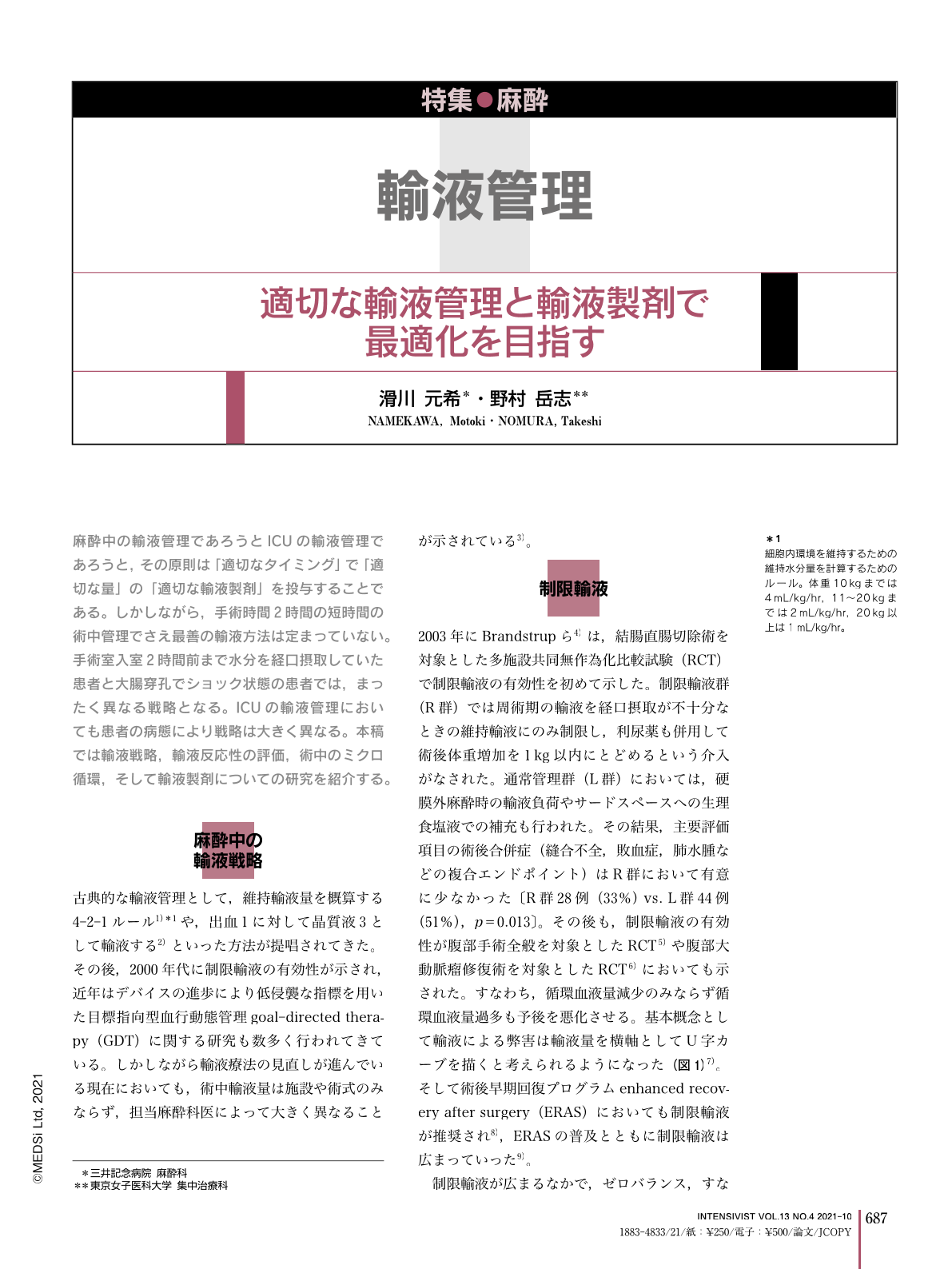Japanese
English
- 有料閲覧
- Abstract 文献概要
- 1ページ目 Look Inside
- 参考文献 Reference
麻酔中の輸液管理であろうとICUの輸液管理であろうと,その原則は「適切なタイミング」で「適切な量」の「適切な輸液製剤」を投与することである。しかしながら,手術時間2時間の短時間の術中管理でさえ最善の輸液方法は定まっていない。手術室入室2時間前まで水分を経口摂取していた患者と大腸穿孔でショック状態の患者では,まったく異なる戦略となる。ICUの輸液管理においても患者の病態により戦略は大きく異なる。本稿では輸液戦略,輸液反応性の評価,術中のミクロ循環,そして輸液製剤についての研究を紹介する。
The goal of fluid management is to restore oxygen delivery to tissues without causing harm. Although there have been numerous studies of perioperative fluid management, optimizing perioperative fluids still remains a challenge for anesthesiologists. A recent randomized trial showed zero balance fluid management could induce acute kidney injury, in contrast to previous trials showing that restrictive fluid management was associated with better outcomes. Goal-directed fluid therapy is promising, but we do not have a definitive protocol supported by large multicenter randomized controlled trials. The type of fluid to be administered is also controversial. Although hydroxyethyl starch is used in many goal-directed fluid protocols, it could induce acute kidney injury in high-risk patients even if administered intraoperatively. Microcirculation could play a key role in perioperative hemodynamic management. However, we need further studies to investigate the etiology of intraoperative microcirculation alterations, the potential interventions to microcirculation, and the relationship between improved microcirculation and perioperative morbidity. This article reviews the latest evidence on perioperative fluid therapy focusing on restrictive fluid management, goal-directed fluid therapy, type of fluid, and microcirculation.

Copyright © 2021, MEDICAL SCIENCES INTERNATIONAL, LTD. All rights reserved.


